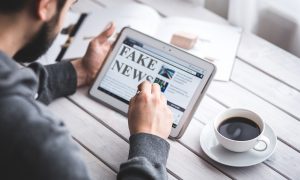The ubiquitous use of short-form Q-and-A style interviews has almost killed in daily newspapers what is one of the more compelling uses of our written medium: The interview story. A Q-and-A has its value, as does accompanying video, but it’s heavily dependent on really good questions ( New York Times Magazine does this well), and in most instances it prevents a good writer from using all her skills to paint the subject in full. This is an even bigger opportunity for business journalism, to flesh out a mogul or newsmaker beyond the standard bio or numbers in an earnings story.
Who merits an interview story is an important choice. Ideally, the chief executives of every major local company should receive the treatment at least once a year. Critical players inside major firms are important, too. The “exit interview” of a retiring executive can be particularly rewarding. Don’t forget non profits, particularly ones set up and run by business leaders. Significant actors in other sectors are worthy: The breakthrough innovator; the big hedge-fund manager; the comeback kid; the controversial economist; the disgraced CEO wanting redemption, and the businessperson who gives us a window into a significant change headed our way.
Roadblocks are many, I realize. Corporate flacks build bigger walls even as corporatized newspapers demand that we talk to “real” people (as if the most influential executive in the state isn’t real). Still, keep trying.
Here are a few moves I’ve learned over the years:
1. Be prepared.
Learn everything about the company and the subject before you ever set foot in his office. I’ve never written questions in advance, preferring to let the interview take its own path, but I know the general themes I want to see addressed. Things get really fun when the subjects surprise you, taking the interview in a direction you never imagined and producing a great story. If a photographer and/or videographer is coming too, work up a game plan in advance so the other person and technology doesn’t dominate and stifle the interview.
2. Ask interesting questions.
I can’t tell you the number of times a hard “ten minutes” I was promised turned into an hour because the subject became engaged, knew I was knowledgeable about her company and industry. Know the competition, competitive issues, challenges and triumphs the company faces. With time constraints, you may have to focus on one topic, so pick it wisely. If you have more time, be prepared with other areas that could be newsworthy.
3. Don’t be afraid or intimidated or taken in by celebrity and power — and in some cases charismatic people.
I’ve been cursed at by Jamie Dimon and snagged a few minutes with Jack Welch at a cocktail party. Big deal. To me, they’re just targets (and I mean that, of course, in a neutral state of mind way), reader food, click bait, powerful people who must be held accountable. Treat them respectfully, have a little fun (Dimon likes you when he curses at you). but never forget you work for the reader.
4. Be a novelist, too.
Note details: What’s on the wall and desk of the office? What is he wearing (e.g., a non-designer shirt without cufflinks)? I set the tone for an interview with a notoriously journalist-hating, hard-to-get executive by noting a photo of a hockey game. Turns out he played when he was younger and our talk about the sport opened up a great conversation about other things. Is she out in the plant? How does she interact with employees and vice versa? How does her tone of voice change when discussing an important topic? Pick the right, telling details to enrich the story.
5. Softballs are OK.
I tend to lob a couple of softballs before I get down to the serious stuff — but I do it in a way that ensures the subject doesn’t think he’s being patronized or speaking to an idiot reporter. Let the person fill in some self-serving details about a deal, her climb to the top or favorite hobby horse issue or who was most influential in teaching them to be a corporate leader (which you probably know, see point No. 1). What book are they reading right now? Then focus in. Depending on the interview, I might pitch soft, soft, hard, soft, hard and hard. You get the idea. The big game in this hunt is New News.
6. Control the rhythm and tone.
The best interviews come good questions, of course, but they are also a result of knowing the deeper levels at which conversations take place. Over time, you’ll find the way to manage these intangibles and tailor them to each subject. Don’t be afraid to ask a question, get an answer — and let silence fill the room until the person gets uncomfortable and talks more, usually giving up the good stuff. Throw in some quick questions, then let the subject philosophize. Let him lose his temper, nod understandingly, say “point taken.” You will learn to be in control.
7. Be Columbo.
As I’ve written before, don’t think you have to come off as a know-it-all. Indeed, this can kill the interview. One must strike a balance between asking questions that show you clearly know the subject and company — and be willing to say, “can you explain how that works?” or “walk me through that so I can explain that to an average reader.” With limited time, the real explanatory work can be done later with the flacks. You’re playing Columbo to get the subject to reveal himself further, give you a deeper window into a strategy or turning point.
8. Look at the subject.
Learn to take notes without looking at your notebook. To me, a tape recorder gets in the way of a candid interview, but journalists I respect disagree. Even if you use a recorder, take notes as a backup. But look the subject in the eye, nod, throw in an “I see” or “un-huh” to keep things going. Another trick: I place a star next to a really important point the subject makes for easy organization as I am going through my notes later.
9. Wrapping up.
Everybody learns to ask a version of, “Those are the questions I have unless there’s something I should have asked but didn’t.” Do that. Another one I have is, “What is the biggest thing the media get wrong about your company (or you)?” And, “What would you say about your strengths and weaknesses if you were evaluating yourself as a boss?”
10. After the interview.
Sit down as soon as possible and fill in your notes with complete sentences, other details you noticed and any follow-up questions. Before or after, you want to find some other voices to flesh out this person: Friends, competitors, ex-employees, analysts, etc. Now you’re ready to lay out the most important news you’ve developed, set the story’s point of attack and talk to your editor.
Finally, don’t forget great writing. This is one of our greatest strengths, yet is too often ignored (and not every great reporter is a great writer, which is why newspapers used to have gifted rewrite people). Business is a great drama, with high stakes, fascinating people and gripping stories — if we know how to tell them. Check out the work of great interview writing. Don’t borrow the moves you see — steal them (and, of course, make them your own).











